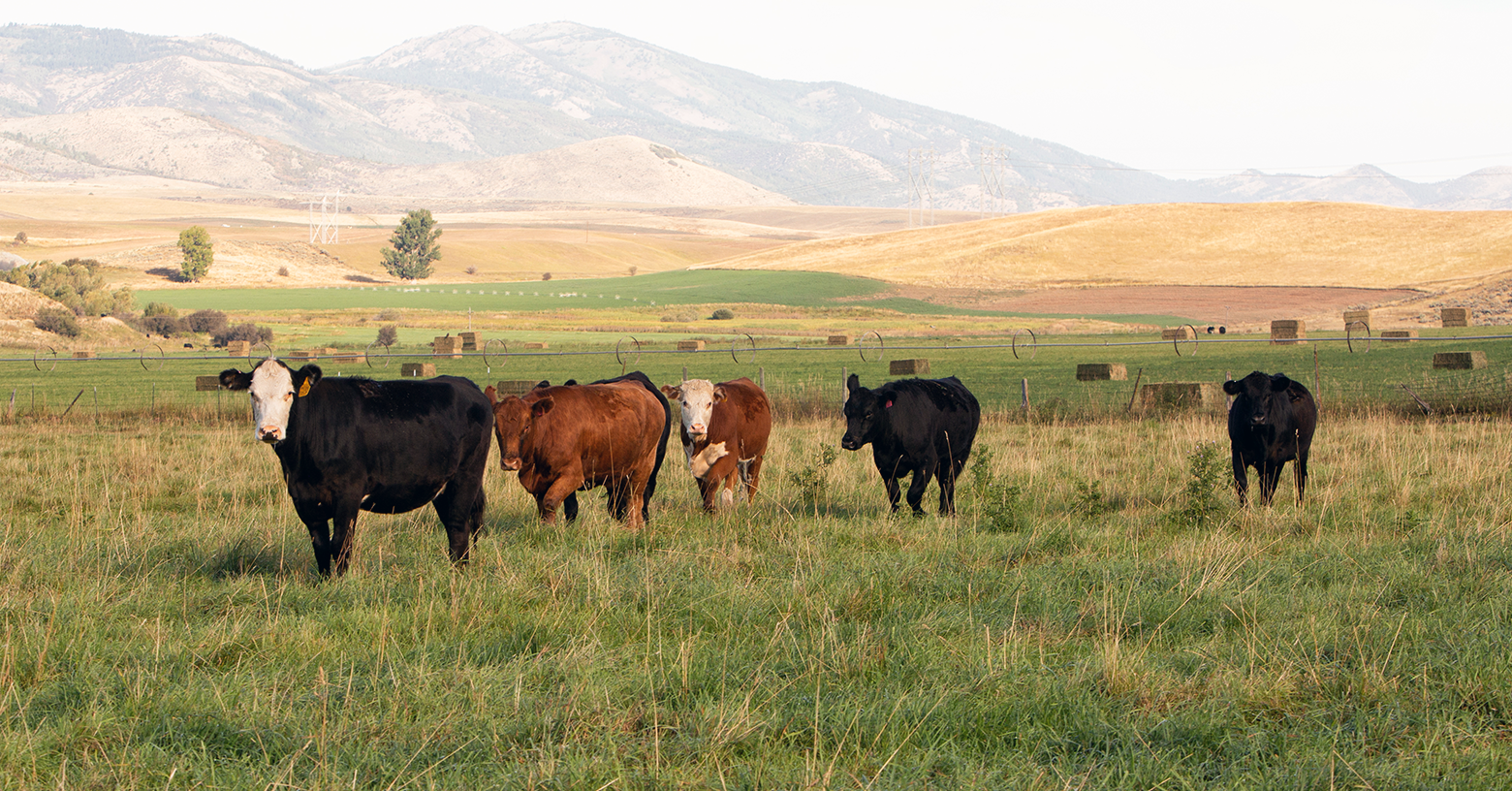
Fresh spring pastures are a welcome sight among farmers and ranchers following a long winter season. Unfortunately, livestock may not take well to this lush pasture growth in the cool, wet springtime.
Cool season grasses growing under common spring conditions are often lacking in an essential mineral: magnesium (Mg). Magnesium and its fellow mineral, calcium (Ca), are essential for normal nerve and muscle function. When blood Mg concentration is too low (a condition known as hypomagnesemia) we observe clinical signs of “tetany” or stiffness to the muscles. This is due to the role of Mg in stopping muscle stimulation.
Intermountain cattlemen understand the importance of proper nutrition for their livestock. Not only is balanced nutrition essential for optimal production, it is essential for the general health of the animal. When animals are not consuming and utilizing key trace minerals such as Mg and Ca in the proper amounts, serious health complications are possible, including Grass Tetany.
What is Grass Tetany
Grass tetany is a metabolic disorder associated with grazing lush, rapidly growing pastures. This results in low concentrations of blood Mg due to mineral deficiencies in the grass that causes nerve impulse failure in animals.
Grass tetany occurs when grasses are growing rapidly with adequate moisture and warm temperatures. Due to ideal springtime conditions, grass tetany often presents itself in May, but also occurs in the fall with new growth of cool-season grass or wheat pasture.
Identifying Grass Tetany in Livestock: Signs and Symptoms
Grass tetany occurs when circulating magnesium is low in the beef animal. Symptoms progress over 4 to 8 hours and include: grazing away from the herd. Irritability, muscle twitching in the flank, wide-eyed staring, muscular incoordination, staggering, collapse, thrashing, head thrown back, coma and finally death.
Death from grass tetany can occur very rapidly, increasing the chances that symptoms may not be observed. Affected animals should be handled calmly. Added stress can cause sudden death.
Prevention and Awareness
Preventing grass tetany depends largely on avoiding conditions that contribute to the disorder. Best management practices to avoid grass tetany include:
Provide Feed with Sufficient Magnesium
Feed legume hay or graze mixed legume-grass pastures since legumes are higher in magnesium than grasses.
Delay Spring Turn-Out
Delay turn-out on spring pastures until plants are 4 to 6 inches tall because magnesium is less available in very immature plants.
Add a High-Magnesium Supplement
Provide a high-magnesium supplement containing 8 to 12% Mg at 3 to 4 oz. daily intake starting three weeks prior to turnout. For a cooked molasses product with a recommended intake of approximately 1 pound per day, the guaranteed analysis for Mg should be approximately 4%. Read the label to ensure adequate Mg levels; know recommended intake and monitor consumption.
Incorporate Legumes into Pastures
A long-term approach is to incorporate more legumes into pasture mixes, as legumes have higher Mg and Ca than do immature grasses, resulting in a better balance across the pasture.
Graze Less-Susceptible Animals
Graze less-susceptible animals on high-risk pastures. Heifers, dry cows or cows with calves over 4 months old, and stocker cattle are less likely to develop tetany.
While providing high Mg mineral helps reduce the incidence of grass tetany, producers should talk to their local veterinarian and have a treatment plan in place for cows who do succumb to grass tetany, as treatment must take place quickly in those cows

Treating Grass Tetany in Livestock
Treatment options are available. Effectiveness depends on the clinical stage when treatment is administered. If treatment is started one or two hours after clinical signs develop, the results are usually a quick recovery. Treatment is not effective if delayed until the coma stage.
Grass tetany can be treated with an intravenous dextrose-based commercial preparation of magnesium and calcium purchased from a local veterinarian. Talk to your veterinarian for more information and to develop a grass tetany protocol.
Adding IFA ICBM Minerals to Your Grazing Program
IFA’s line of Intermountain Cattlemen Beef Mineral (ICBM) is specifically formulated to provide key vitamins and trace minerals essential for health and productivity in beef cattle. These minerals are designed for free-choice feeding to cattle grazing on intermountain pastures and rangeland to provide nutrients commonly lacking in intermountain forages.
Improve Livestock Production with IFA ICBM Mineral Supplement
IFA animal nutrition experts have formulated the ICBM line specifically to match current forage conditions and for optimal palatability to ensure consistent consumption while on pasture. Talk to your local IFA Feed and Nutrition advisor for recommendations on incorporating ICBM mineral to help combat grass tetany in livestock.
Helping Protect Your Livestock
Keeping cattle healthy and productive means ensuring they receive the proper, balanced nutrition, especially while grazing. Contact an IFA Feed and Nutrition expert and talk to your veterinarian to help combat grass tetany in your herd.
Remember cattle are more susceptible to grass tetany in the spring and in the fall with new growth of cool-season grass or wheat pasture. Determine and implement prevention practices, monitor cattle for symptoms, and treat as soon as possible according to a protocol developed with your veterinarian.
Information provided by Dennis Christensen, MS, PAS, IFA Feed & Nutrition; Jim Lamb, Ph.D., PAS, IFA Feed & Nutrition and Jill Singleton, Bagged Feed & Animal Health Category Manager, IFA Feed & Nutrition.

